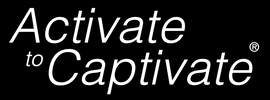|
Many people feel pressured to memorize their presentations. That’s completely understandable because if you’ve worked hard preparing a talk, you want to make sure you’re not forgetting those key ideas. However, I usually advise against memorizing a talk because when you worry about getting every word correct it can take your focus away from the main goal of the presentation — connecting to your audience. Instead of worrying about remembering every word, here are three alternative ways to prepare for a talk:
1. Change “memorize” to “familiarize” Instead of memorizing, think of it as “storytelling”. For example, when you go to a small get together, you often tell stories without practicing every word in the story. Instead, you think about how the story starts, where something changes, and specific points you want to highlight. Each time you tell this story, you realize some points you want to say a little differently or put more emphasis on. That’s how you should think of preparing for a presentation. It’s not about getting everything perfect — it’s about knowing the order of your story and certain points that will make an impact. 2. Practice key moments An audience pays the most attention during the introduction, transitions, and conclusion of a talk. Therefore, those are the parts I practice the most. If you know how you want to start your talk, how the ideas connect, and the last idea you want to share, you’ll be adequately prepared. As long as those moments are polished, you will leave the audience with a professional impression of your speech. 3. Practice without looking at the slides Most people practice presentations staring at their screen. Then, when they go to give a talk, they get thrown off because their view has changed. That’s because when you’re talking to an audience, there are far more variables to look at. Therefore, I recommend practicing in different environments. That way, when you give your talk, you’ll have an easier time remembering your content. Instead of worrying about “memorizing” a talk, think about telling a story, rehearse the main sections, and practice without looking at your slides. This way you can still feel prepared before your talk and you can focus on the main reason you’re there — to share your ideas with your audience in the best possible way. |
AuthorBri McWhorter is the Founder and CEO of Activate to Captivate. Categories
All
Videos
Archives
June 2024
|
Click to Contact
© 2014-2024 Activate to Captivate, LLC
All Rights Reserved
All Rights Reserved


 RSS Feed
RSS Feed
